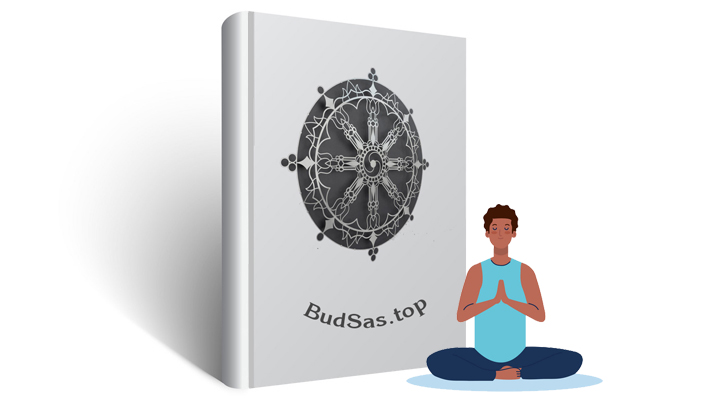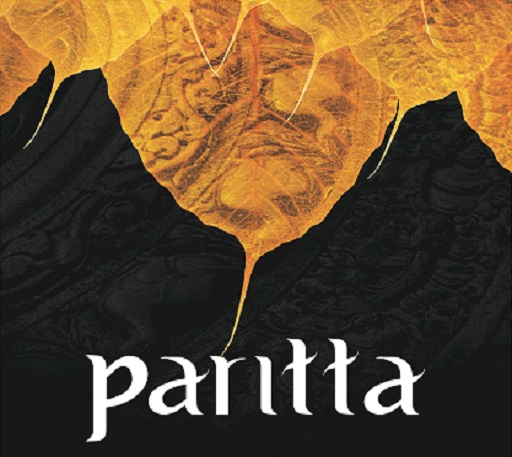Table of Contents | Mục lục [hide | ẩn]
GUIDE TO TIPITAKA
Compiled by Professor Ko Lay
& Edited by Editorial Committee
BURMA PITAKA ASSOCIATION
1986
Chapter I – What is Vinaya Pitaka?
Disciplinary and Procedural Rules for the Samgha
The Vinaya Pitaka is made up of rules of discipline laid down for regulating the conduct of the Buddha’s disciples who have been admitted as bhikkhus and bhikkhunis into the Order. These rules embody authoritative injunctions of the Buddha on modes of conduct and restraints on both physical and verbal actions. They deal with transgressions of discipline, and with various categories of restraints and admonitions in accordance with the nature of the offence.
(a) Seven Kinds of Transgression or Offence, Apatti
The rules of discipline first laid down by the Buddha are called Mulapannatti (the root regulation); those supplemented later are known as Anupannatti. Together they are known as Sikkhapadas, rules of discipline. The act of tranagressing these rules of discipline, thereby incurring a penalty by the guilty bhikkhu, is called Apatti, which means ‘reaching, committing’.
The offences for which penalties are laid down may be classified under seven categories depending on their nature:
(i) Parajika
(ii) Samghadisesa
(iii) Thullaccaya
(iv) Pacittiya
(v) Patidesaniya
(vi) Dukkata
(vii) Dubbhasita.
An offence in the first category of offences, Parajika, is classified as a grave offence, Garukapatti, which is irremediable, atekiccha and entails the falling off of the offender from bhikkhuhood.
An offence in the second category, Samghadisesa, is also classified as a grave offence but it is remediable, satekiccha. The offender is put on a probationary period of penance, during which he has to undertake certain difficult practices and after which he is rehabilitated by the Samgha assembly.
The remaining five categories consist of light offences, lahukapatti, which are remediable and incur the penalty of having to confess the transgression to another bhikkhu. After carrying out the prescribed penalty, the bhikkhu transgressor becomes cleansed of the offence.
(b) When and how the disciplinary rules were laid down.
For twenty years after the establishment of the Order there was neither injunction nor rule concerning Parajika and Samghadisesa offences. The members of the Order of the early days were all Ariyas, the least advanced of whom was a Stream-winner, one who had attained the first Magga and Fruition, and there was no need for proscribing rules relating to grave offences.
But as the years went by, the Samgha grew in strength. Undesirable elements not having the purest of motives but attracted only by the fame and gain of the bhikkhus began to get into the Buddha’s Order. Some twenty years after the founding of the Order, it became necessary to begin establishing rules relating to grave offences.
It was through Bhikkhu Sudinna, a native of Kalanda Village near Vesali, who committed the offence of having sexual intercourse with his ex-wife, that the first Parajika rule came to be promulgated. It was laid down to deter bhikkhus from indulging in sexual intercourse.
When such a grave cause had arisen for which the laying down of a prohibitory rule became necessary, the Buddha convened an assembly of the bhikkhus. It was only after questioning the bhikkhu concerned and after the undesirability of committing such an offence had been made clear that a certain rule was laid down in order to prevent future lapses of similar nature.
The Buddha also followed the precedence set by earlier Buddhas. Using his supernormal powers, he reflected on what rules the earlier Buddhas would lay down under certain given conditions. Then he adopted similar regulations to meet the situation that had arisen in his time.
(c) Admission of Bhikkhunis into the Order
After spending four vassas (residence period during the rains) after his Enlightenment, the Buddha visited Kapilavatthu, his native royal city, at the request of his ailing father, King Suddhodana. All that time, Mahapajapati, Buddha’s foster mother requested him to admit her into the Order. Mahapajapati was not alone in desiring to join the Order. Five hundred Sakyan ladies whose husbands had left the household life were also eager to be admitted into the Order.
After his father’s death, the Buddha went back to Vesali, refusing the repeated request of Mahapajapati for admission into the Order. The determined foster mother of the Buddha and widow of the recently deceased King Suddhodana, having cut off her hair and put on bark-dyed clothes, accompanied by five hundred Sakyan ladies, made her way to Vesali where the Buddha was staying in the Mahavana, in the Kutagara Hall.
The Venerable Ananda saw them outside the gateway of the Kutagara Hall, dust-laden with swollen feet, dejected, tearful, standing and weeping. Out of great compassion for the ladies, the Venerable Ananda interceded with the Buddha on their behalf and entreated him to accept them in the Order. The Buddha continued to stand firm. But when the Venerable Ananda asked the Buddha whether women were not capable of attaining Magga and Phala Insight, the Buddha replied that women were indeed capable of doing so, provided they left the household life like their menfolk.
Thereupon Ananda made his entreaties again saying that Mahapajapati had been of great service to the Buddha waiting on him as his guardian and nurse, suckling him when his mother died. And as women were capable of attaining the Magga and Phala Insight, she should be permitted to join the Order and become a bhikkhuni.
The Buddha finally acceded to Ananda’s entreaties: “Ananda, if Mahapajapati accepts eight special rules, garu-dhamma, let such acceptance mean her admission to the Order.”
The eight special rules [*] are:
(i) A bhikkhuni, even if she enjoys a seniority of a hundred years in the Order, must pay respect to a bhikkhu though he may have been a bhikkhu only for a day.
(ii) A bhikkhuni must not keep her rains-residence in a place where there are no bhikkhus.
(iii) Every fortnight a bhikkhuni must do two things: To ask the bhikkhu Samgha the day of uposatha, and to approach the bhikkhu Samgha for instruction and admonition.
(iv) When the rains-residence period is over, a bhikkhuni must attend the pavarana ceremony conducted at both the assemblies of bhikkhus and bhikkhunis, in each of which she must invite criticism on what has been seen, what has been heard or what has been suspected of her.
(v) A bhikkhuni who has committed a Samghadisesa offence must undergo penance for a half-month, pakkha manatta, in each assembly of bhikkhus and bhikkhunis.
(vi) Admission to the Order must be sought, from both assemblies, by a woman novice only after two year’s probationary training as a candidate.
(vii) A bhikkhuni should not revile a bhikkhu in any way, not even obliquely.
(viii) A bhikkhuni must abide by instructions given her by bhikkhus, but must not give instructions or advice to bhikkhus.
Mahapajapati accepted unhesitatingly these eight conditions imposed by the Buddha and was consequently admitted into the Order.

![[PDF] The book of the Discipline – Vinayapiṭaka – The full 6 Volumes](https://en.namo84000.org/wp-content/uploads/2023/12/The-Book-of-the-Discipline-Vinaya-Pitaka.jpg)


![[En] Guide to Tipitaka](https://en.namo84000.org/wp-content/uploads/2021/10/Kinh-Phat-Quan-trong-2.jpg)